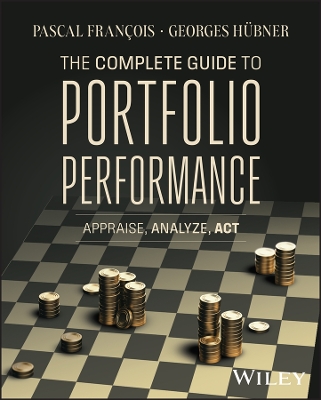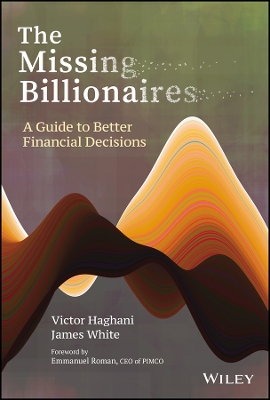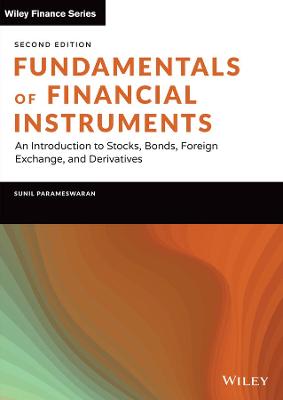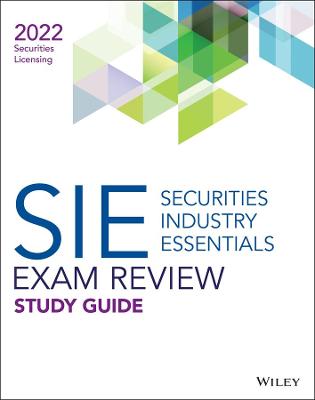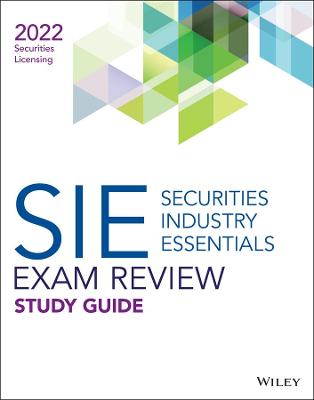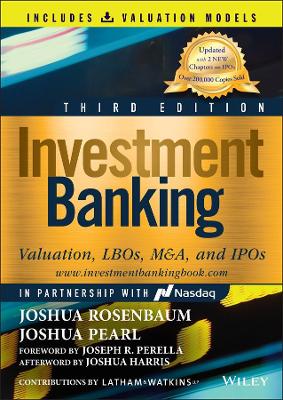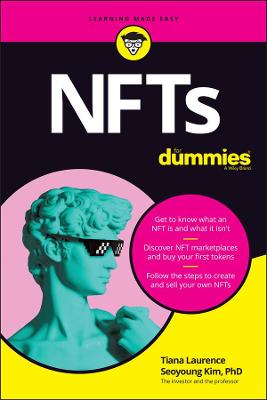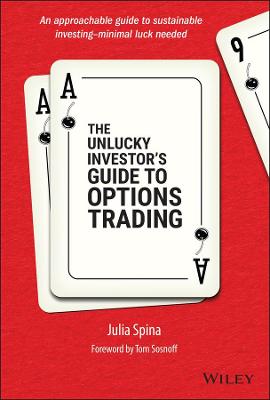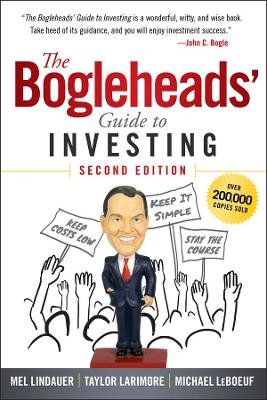Quantitative Trading
 -15%
portes grátis
-15%
portes grátis
Quantitative Trading
How to Build Your Own Algorithmic Trading Business
Chan, Ernest P.
John Wiley & Sons Inc
09/2021
256
Dura
Inglês
9781119800064
15 a 20 dias
450
Preface xv
Acknowledgments xxi
Chapter 1: The Whats, Whos, and Whys of Quantitative Trading 1
Who Can Become a Quantitative Trader? 2
The Business Case for Quantitative Trading 4
Scalability 5
Demand on Time 5
The Nonnecessity of Marketing 7
The Way Forward 8
Chapter 2: Fishing for Ideas 11
How to Identify a Strategy that Suits You 14
Your Working Hours 14
Your Programming Skills 15
Your Trading Capital 15
Your Goal 19
A Taste for Plausible Strategies and Their Pitfalls 20
How Does It Compare with a Benchmark, and How Consistent Are Its Returns? 20
How Deep and Long Is the Drawdown? 23
How Will Transaction Costs Affect the Strategy? 24
Does the Data Suffer from Survivorship Bias? 26
How Did the Performance of the Strategy Change over the Years? 27
Does the Strategy Suffer from Data-Snooping Bias? 28
Does the Strategy "Fly under the Radar" of Institutional Money Managers? 30
Summary 30
References 31
Chapter 3: Backtesting 33
Common Backtesting Platforms 34
Excel 34
MATLAB 34
Python 36
R 38
QuantConnect 40
Blueshift 40
Finding and Using Historical Databases 40
Are the Data Split and Dividend Adjusted? 41
Are the Data Survivorship-Bias Free? 44
Does Your Strategy Use High and Low Data? 46
Performance Measurement 47
Common Backtesting Pitfalls to Avoid 57
Look-Ahead Bias 58
Data-Snooping Bias 59
Transaction Costs 72
Strategy Refinement 77
Summary 78
References 79
Chapter 4: Setting Up Your Business 81
Business Structure: Retail or Proprietary? 81
Choosing a Brokerage or Proprietary Trading Firm 85
Physical Infrastructure 87
Summary 89
References 91
Chapter 5: Execution Systems 93
What an Automated Trading System Can Do for You 93
Building a Semiautomated Trading System 95
Building a Fully Automated Trading System 98
Minimizing Transaction Costs 101
Testing Your System by Paper Trading 103
Why Does Actual Performance Diverge from Expectations? 104
Summary 107
Chapter 6: Money and Risk Management 109
Optimal Capital Allocation and Leverage 109
Risk Management 120
Model Risk 124
Software Risk 125
Natural Disaster Risk 125
Psychological Preparedness 125
Summary 130
Appendix: A Simple Derivation of the Kelly Formula when Return Distribution Is Gaussian 131
References 132
Chapter 7: Special Topics in Quantitative Trading 133
Mean-Reverting versus Momentum Strategies 134
Regime Change and Conditional Parameter Optimization 137
Stationarity and Cointegration 147
Factor Models 160
What Is Your Exit Strategy? 169
Seasonal Trading Strategies 174
High-Frequency Trading Strategies 186
Is it Better to Have a High-Leverage versus a High-Beta Portfolio? 188
Summary 190
References 192
Chapter 8: Conclusion 193
Next Steps 197
References 198
Appendix: A Quick Survey of MATLAB 199
Bibliography 205
About the Author 209
Index 211
Preface xv
Acknowledgments xxi
Chapter 1: The Whats, Whos, and Whys of Quantitative Trading 1
Who Can Become a Quantitative Trader? 2
The Business Case for Quantitative Trading 4
Scalability 5
Demand on Time 5
The Nonnecessity of Marketing 7
The Way Forward 8
Chapter 2: Fishing for Ideas 11
How to Identify a Strategy that Suits You 14
Your Working Hours 14
Your Programming Skills 15
Your Trading Capital 15
Your Goal 19
A Taste for Plausible Strategies and Their Pitfalls 20
How Does It Compare with a Benchmark, and How Consistent Are Its Returns? 20
How Deep and Long Is the Drawdown? 23
How Will Transaction Costs Affect the Strategy? 24
Does the Data Suffer from Survivorship Bias? 26
How Did the Performance of the Strategy Change over the Years? 27
Does the Strategy Suffer from Data-Snooping Bias? 28
Does the Strategy "Fly under the Radar" of Institutional Money Managers? 30
Summary 30
References 31
Chapter 3: Backtesting 33
Common Backtesting Platforms 34
Excel 34
MATLAB 34
Python 36
R 38
QuantConnect 40
Blueshift 40
Finding and Using Historical Databases 40
Are the Data Split and Dividend Adjusted? 41
Are the Data Survivorship-Bias Free? 44
Does Your Strategy Use High and Low Data? 46
Performance Measurement 47
Common Backtesting Pitfalls to Avoid 57
Look-Ahead Bias 58
Data-Snooping Bias 59
Transaction Costs 72
Strategy Refinement 77
Summary 78
References 79
Chapter 4: Setting Up Your Business 81
Business Structure: Retail or Proprietary? 81
Choosing a Brokerage or Proprietary Trading Firm 85
Physical Infrastructure 87
Summary 89
References 91
Chapter 5: Execution Systems 93
What an Automated Trading System Can Do for You 93
Building a Semiautomated Trading System 95
Building a Fully Automated Trading System 98
Minimizing Transaction Costs 101
Testing Your System by Paper Trading 103
Why Does Actual Performance Diverge from Expectations? 104
Summary 107
Chapter 6: Money and Risk Management 109
Optimal Capital Allocation and Leverage 109
Risk Management 120
Model Risk 124
Software Risk 125
Natural Disaster Risk 125
Psychological Preparedness 125
Summary 130
Appendix: A Simple Derivation of the Kelly Formula when Return Distribution Is Gaussian 131
References 132
Chapter 7: Special Topics in Quantitative Trading 133
Mean-Reverting versus Momentum Strategies 134
Regime Change and Conditional Parameter Optimization 137
Stationarity and Cointegration 147
Factor Models 160
What Is Your Exit Strategy? 169
Seasonal Trading Strategies 174
High-Frequency Trading Strategies 186
Is it Better to Have a High-Leverage versus a High-Beta Portfolio? 188
Summary 190
References 192
Chapter 8: Conclusion 193
Next Steps 197
References 198
Appendix: A Quick Survey of MATLAB 199
Bibliography 205
About the Author 209
Index 211

